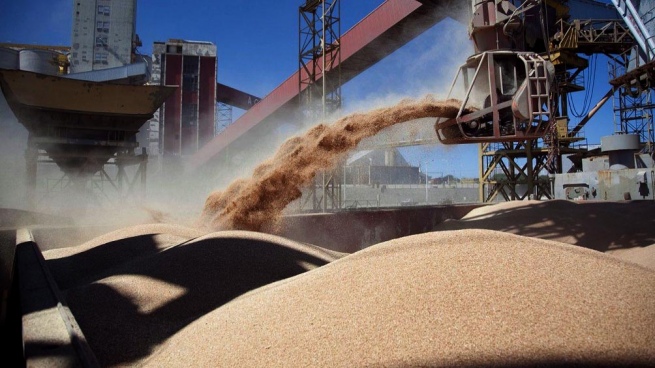Russia’s invasion of Ukraine had repercussions on the world grain market with strong volatility in its prices and put a new question mark regarding the supply of this commodity due to the reduction that this type of conflict means in terms of logistics.
Although Russian President Vladimir Putin ordered the entry of his forces in the early hours of Thursday, the market began to reflect this situation in advance since last Tuesday, after Russia announced the recognition of the independence of the self-proclaimed separatist republics of Donetsk and Lugansk, the previous step for sending troops to those territories.
At that very moment, Chicago began to report widespread increases and led to a week of extreme volatility, with prices reaching close to all-time highs.
A report from the Institute for International Agricultural Negotiations (INAI) of the Buenos Aires Grain Exchange (BCBA) noted that the conflict produced an “increase in intraday volatility (difference between the maximum and minimum price traded in one day), reflection of the level of uncertainty under which grain markets operate”.
? New document “Ukraine-Russia: effects on international markets and Argentine agriculture”. Produced by @Bolsadecereales @StudiosEcoBc
and @Fundacion_INAI
.
.
To see it complete?: https://t.co/SnTQ9ck86g pic.twitter.com/cJZwpw4p7G— INAI Foundation (@Fundacion_INAI) February 25, 2022
As an example, they pointed out that last Thursday, the Chicago market presented an intraday volatility of 7%when the rest of the month was in the order of 2%.
In that framework, soybeans and soybean oil They came to be negotiated with values close to historical maximums, since beans reached US$ 646 per ton and oil US$ 1,644 per ton.
After reaching these values, both products marked significant setbacks due to strong profit-taking by speculative funds.
In this way, soybeans ended the week with falls compared to the previous Friday’s settlement (-0.70%), while the corn marked a moderate rise (+0.80%) in the same period.
“A very volatile scenario arises until the situation is defined a little and it becomes clear what Russia’s objectives are going to be with Ukraine”(FW)Gonzalo Agusto
While, the most considerable increases were registered in wheatwith an increase in the price of 5.77%, going from US$292.85 to US$309.75 per ton, after reaching a maximum of US$340.24 per ton on Thursday.
for the economist head of the Córdoba Cereal Exchange (Bccba), Gonzalo Agusto, the continuity of market volatility will be tied to the evolution of the conflict.
“A very volatile scenario arises until the situation is defined a little and it becomes clear what Russia’s objectives are going to be with Ukraine,” Agusto told Télam.
The specialist said that this conflict “will surely have an impact on fertilizers and the export of corn and wheat.”

Agusto said that in order to understand the movement of prices, it is necessary to take into account, among other factors, the important participation of both countries in the production of grains and, above all, in their trade and logistics.
According to the INAI reportRussia and Ukraine together account for 14% of world wheat production, 4.7% for corn and 59.5% for sunflower oil.
Regarding exports the numbers are more conclusive: both countries account for 28.5% of wheat; 18.7% from corn; and 78.3% of sunflower oil sold globally.
another specialist, the market analyst of the grain broker Grassi, Juan Manuel Ubertitold Télam that “the great fear of possible interruptions in shipments from such terminals was interpreted as a greater demand for other origins, overheating prices worldwide.”
“The volatility in prices will be high, mainly affected by the turbulence in the commodity and financial markets caused by the conflict,” Uberti added.
“The volatility in prices will be high, mainly affected by the turbulence in the commodity and financial markets caused by the conflict”Juan Manuel Ubertti
“As long as this scenario persists, the market will react positively or negatively to the news regarding trade flows. In addition, we must not lose sight of the fact that the segment belonging to speculative funds usually take very variable positions in these scenarios, causing important price variations”, stressed the specialist.
For its part, the director of the Agritrend consultancy, Gustavo Lópezmaintained that wheat is the grain that “has the greatest exposure component in the Russian-Ukrainian conflict” since both countries had planned to export around 60 million tons before the start of the conflict, out of a projected total of 207 million tons. globally for the current year.
“That 30% of world trade goes through the Black Sea and there is already talk that there is a suspension of exports in those ports, for example in Odessa. The same thing happens in the Azov Sea,” López said.

















